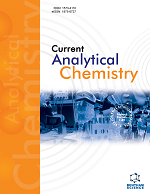
Full text loading...

Mango is a kind of popular fruit in consumer market, which is rich in nutrients, fiber, and vitamins. People have different taste preferences for different varieties of mango. Near-infrared (NIR) spectroscopy is a non-destructive, green, and economical technology that serves for rapid detection. Several machine learning methods are applied for deep mining from the detected NIR data. It is beneficial for consumers to give rapid recognition of the cultivar of mangos.
Partial least squares discrimination analysis (PLS-DA), support vector machine (SVM), back propagation neural network (BPNN), and convolutional neural network (CNN) are taken into consideration for model training. Grid search on parametric scaling is carried out for model optimization based on these methods. A special design of a dual-convolutional neural network (dCNN) is proposed and validated.
For the comparison of different methods, the optimal SVM, PLS-DA, BPNN, and CNN methods observed the discrimination accuracy of 86.49%, 83.68%, 85.61%, and 88.60% for model training, respectively. The proposed dCNN method performs better in the model testing progress than all of the conventional methods, observing the highest accuracy of 89.34%.
Results reveal that most of the machine learning methods are effective as the chemometric support to the NIR technology in the application of mango classification. They are prospectively applied to other analytes for data mining in the field.
The proposed dCNN architecture is validated as feasible to improve the model prediction effect, which is expected to help widen the application of the green and economical NIR technology.

Article metrics loading...

Full text loading...
References


Data & Media loading...